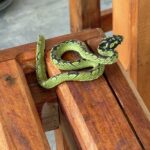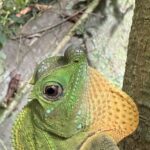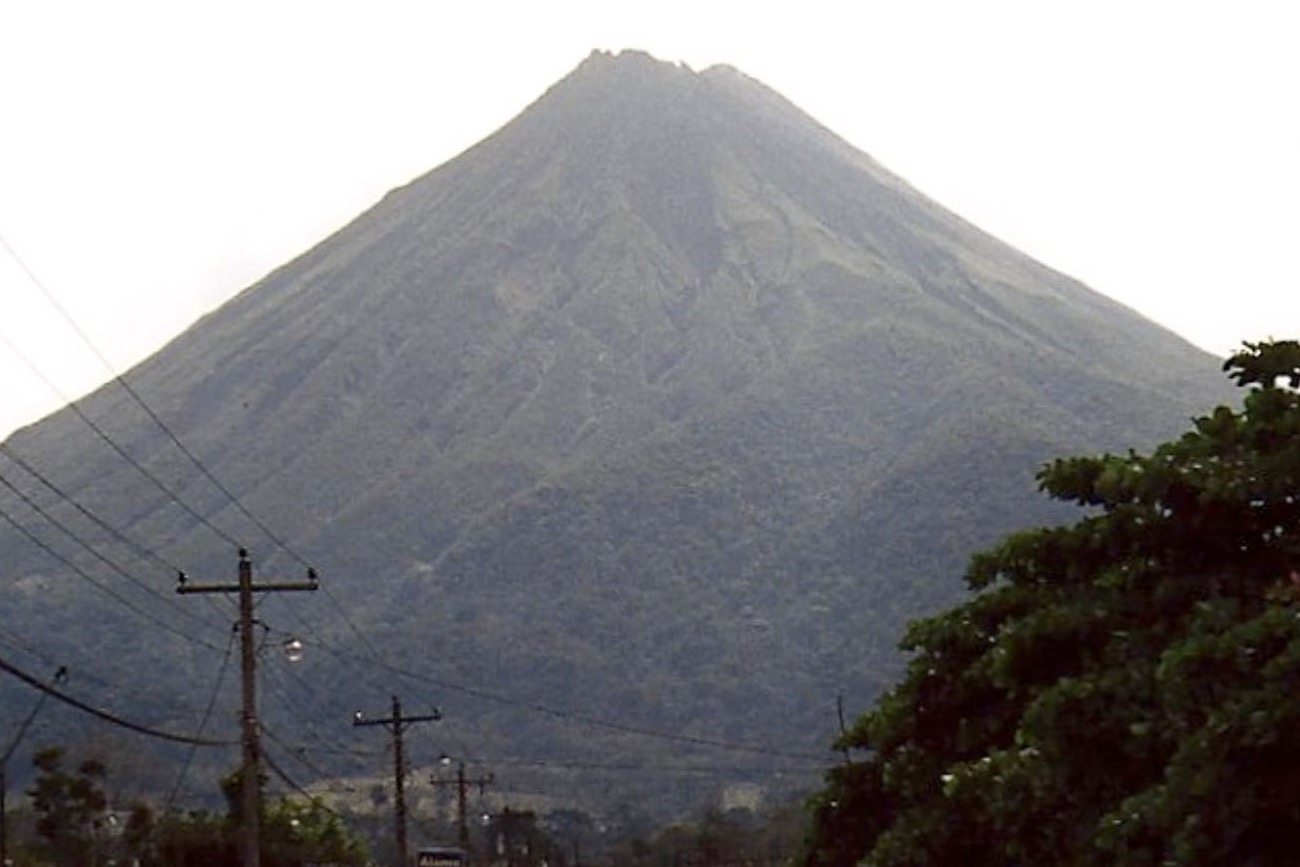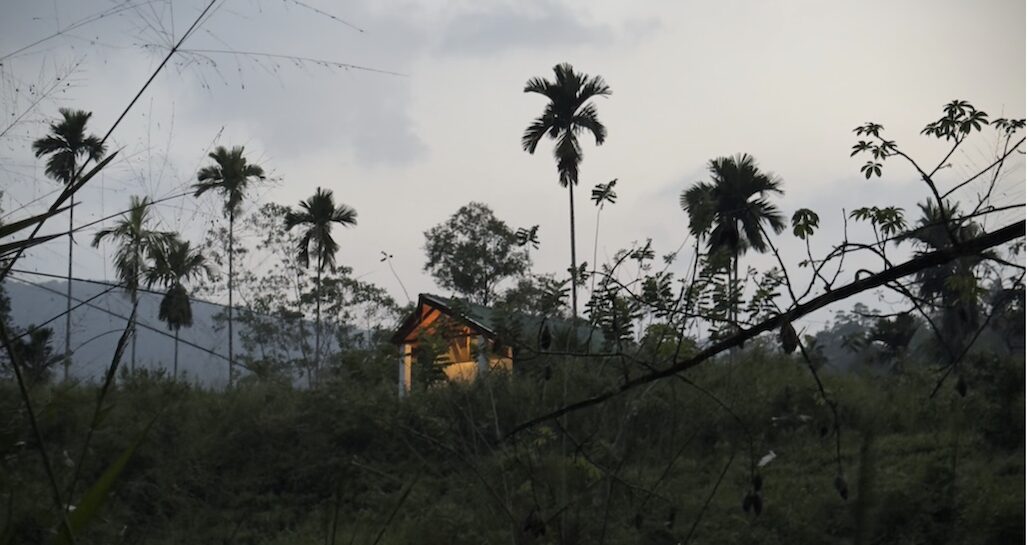
Looking for a hideaway deep in the rainforests of Sri Lanka? Then look no further than the Rainforest Hideaway.
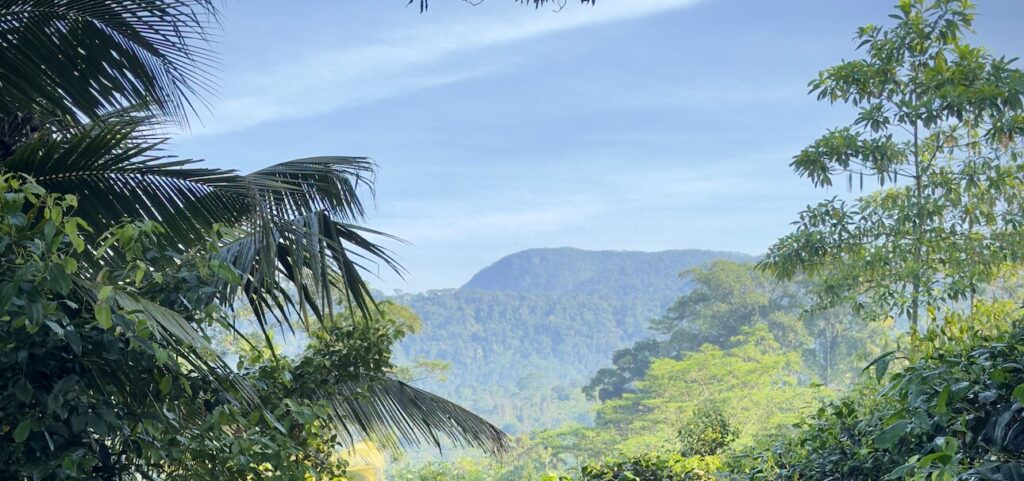
SRI LANKA RAINFOREST ADVENTURE
The ancient Mitsubishi jeep rattled, creaked, and jolted over deep ruts in the baked red-earth jungle track as we crawled uphill, deeper into the forest, with each bone-jarring dip and bounce. I sat up front, holding onto the metal frame around the windscreen, admiring the sheer skill of our driver while gritting my teeth as each jolt of the vehicle’s suspension sent an electric shock from the small of my back to the top of my spine.

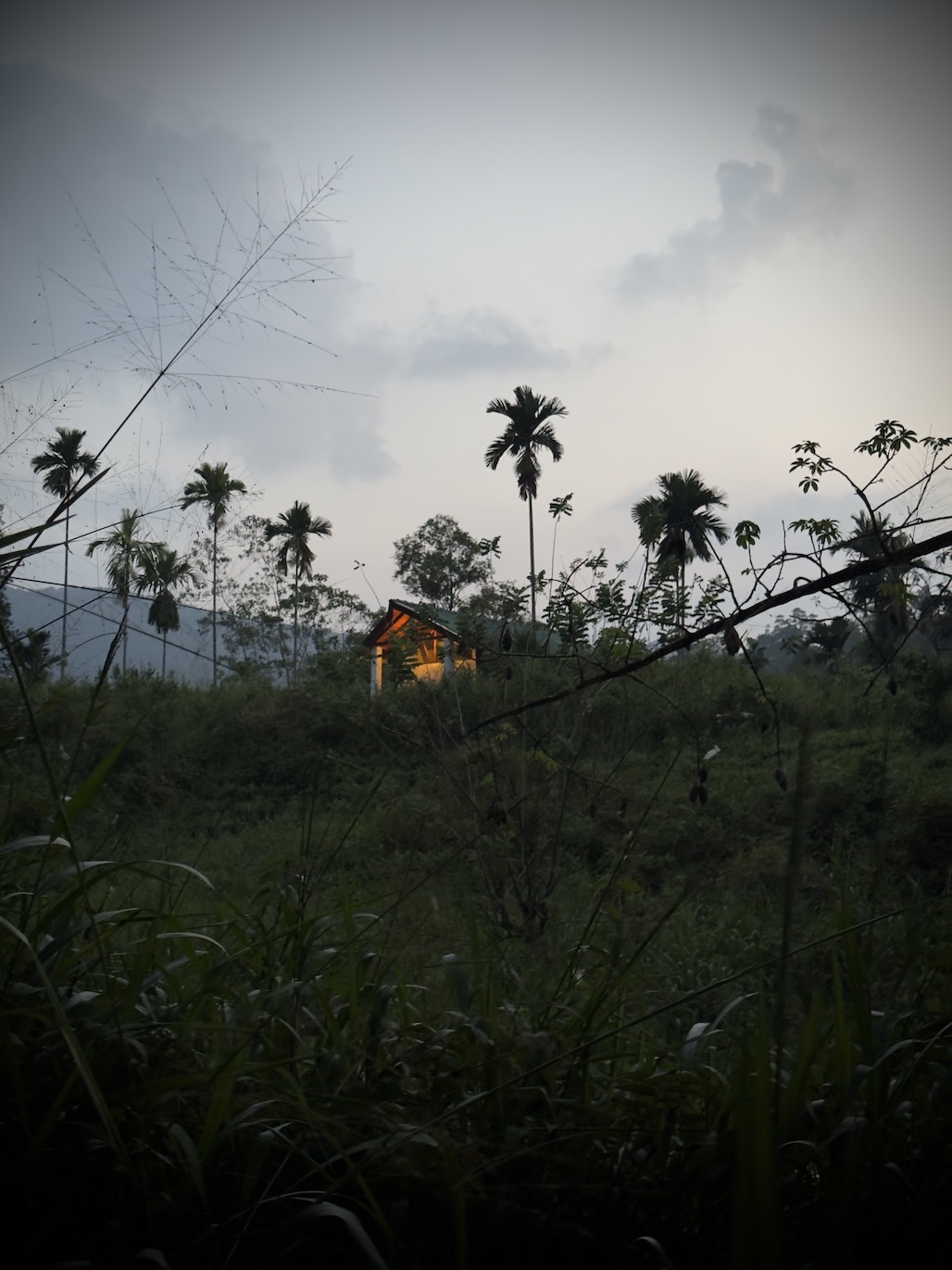

THE BEST RAINFOREST ACCOMMODATION
We are on our way to the Rainforest Hideaway, a small collection of home-made cabins built on a hillside beside a waterfall surrounded by dense jungle. Our talented jeep driver, Shahara, is the son of the owners. His mother does the cooking. After fifteen minutes of kangarooing into the rainforest, with nonchalant expertise, he wrestles with the jeep’s steel steering wheel so that the nobbled front tyre jams against a thick tree root. Happy that the jeep won’t roll down the steep incline and into the river below, he turns off the growling diesel engine and hops out of the jeep to open the door for his awe-inspired passengers.
To our right are trees and plants, with three new cabins hidden within, each building at a different stage of its construction. The father comes up the small incline to greet us and busies himself helping Shahara shoulder the over-packed hardshell suitcases we wished we’d left behind in Blighty. He led us down a rutted path, before hanging a left to the wooden cabin that acted as both reception, an open-air dining room and the kitchen. Our ears are filled with the ever-present cacophony of bird and animal calls, but in the background, we pick up the first rushing sound of the waterfall. As we near the reception, the roar of the waterfall dominates, yet the jungle sounds are still there, chirping, kakawing, pinging and whistling sweet melodies.
We settle into the wooden bench seats on the narrow verandah of the reception cabin and look left to the only three cabins already built and wonder which will be ours. Shahara leans into a small opening in the rear wall and exchanges instructions with someone inside. Soon after, his mother emerges carrying the most delicious cucumber juice drinks, ice cold and so soothing after our hot, bumpy ride up the hill. It takes but a moment to complete the bureaucratic necessities and receive instructions for dinner and our pre-booked trek into the Singaraja Rainforest Reserve. A few minutes later, drinks downed, we follow our cases a few steps along a narrow track to our home for the night, a high-roofed wooden cabin. Its raised deck looks down onto the white foam of the roaring waterfall, just metres away from our front door. We go inside. The space is rustic, with only the bare essentials, but these include a comfortable king-sized bed and a single. The sheets are crisp and white and smell of cinnamon. A broad fan spins above us, making the room feel cooler than the sticky thirty-two degrees outside. We spot the huge rock at the far end of the sleeping quarters and later notice the same quirk in the shower area of the adjacent bathroom. It adds to the quirkiness yet has a practical reason for being there. The rock is heavy and solid. Only a fool would want to destroy the natural environment with heavy machinery or explosives. Besides, I doubt it would be possible for something such as a JCB digger to reach this far into the jungle, not up the narrow winding track we arrived via. Instead, the innovative family owners had left the rocks where they were and improvised, building the cabin’s wooden structure around them. It only added to the authenticity and the wildness of where we’d chosen to sleep.
After a lunch of delicious, spiced vegetable soup, we explored the valley, sit by the rushing waterfall for a moment and then wander along the wooded paths before lying out our cases on the bed and selecting our attire for that afternoon’s excursion, a trek deep into the Sinahraja Rainforest Reserve. The Rainforest Hideaway provides a selection of tours, including a three-hour “short” walk, a longer four- to five-hour walk and also a nighttime walk. We chose the short walking tour, as we’d arrived at midday and the sun sets at around six at this time of year. As it transpired, our walk was longer than expected, and we returned after the dark, ravenous for whatever meal Shahara’s mother had prepared for us. But more on that later. First, we needed to pile back into the trusty jeep, alongside two other guests, two friendly female travellers from Poland and China.
Another bumpy drive down the track ended at a crossroads in a tiny, secluded village where our guide jumped into the front seat before we headed along another, less bumpy track to the forest entrance. We dismounted and continued on foot, pausing briefly while our guide distributed our reserve entry licenses and briefed us on the upcoming trek. As it had not rained for five days, the chances of encountering leeches was minor, but just in case, our guide coated our shoes with salt, which deters the pesky, wriggling blood-suckers.
We began our hike, and even before we’d emerged from the small collection of wooden accommodation blocks and cafes, our guide stopped us. He ushered us into the cafe’s empty dining area; we expected a welcome drink, a frequent Sri Lankan practice. But no, the guide had spotted the first wildlife of many. He pointed to one of the wooden chairs tucked under a long table. Right there, on the chair, coiled and fast asleep, was a young, luminous green snake. A viper. Though deadly venomous, this infant, a luminous, green snake, was only there to rest, so we let it be and continued on our hike. For the first of many occasions, we took out our phones and photographed the snoozing snake, making a mental note to check our chairs with care before sitting down for dinner later that night.
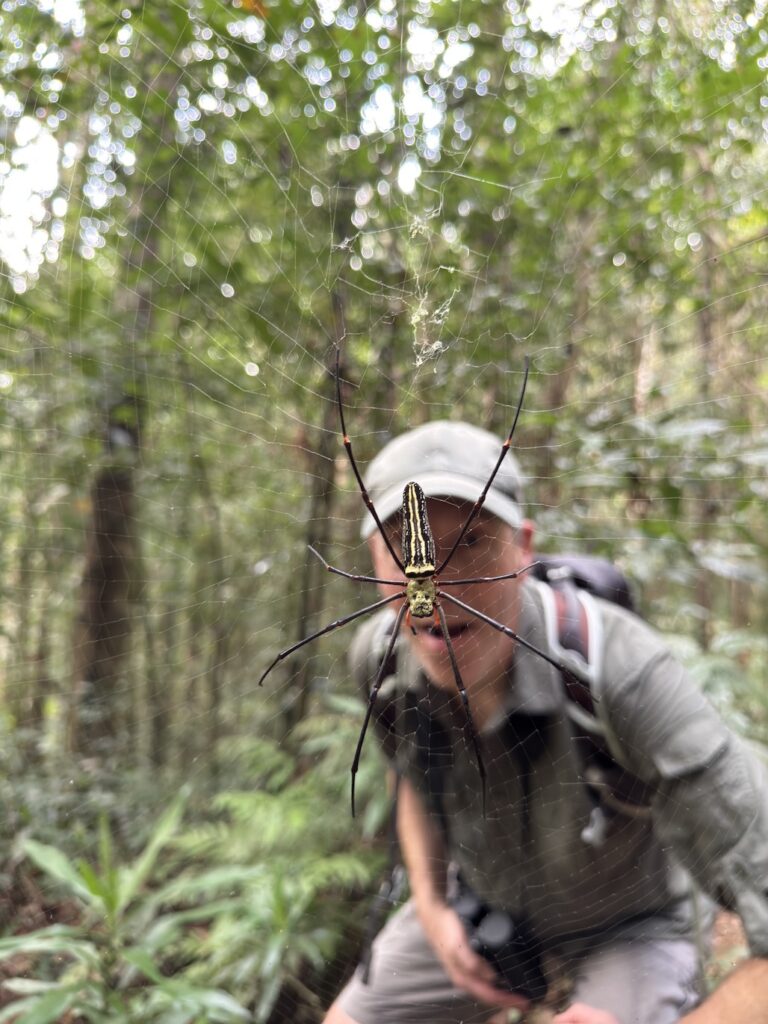
As we hiked along the well-worn jungle paths, our guide pointed out a menagerie of birds, insects, and animals that we would otherwise have walked right by, without the slightest inkling they were metres away from us, eyeing us up with abject curiosity. We came across a spider, and this was no “Incy-Wincy”. It was as big as my hand if I stretched out my fingers to amulate its spindly, black and white striped legs. It sat at the centre of its web, which cut across our path, and I couldn’t help wonder what might have happened had our eagle-eyed point man not spotted it and we’d failed to duck beneath.
Overhead, monkeys sat and watched us, chewing on leaves or jack fruit. Birds of every colour under the rainbow darted here, there, and everywhere in the dense canopy. An enormous brown owl sat on a branch and winked as we glared at it through our binoculars. We spotted several lizards, the most beautiful being a green, red, and orange Snub-Nosed Lizard. At one point, our guide pointed out a three-inch diameter hole under a boulder next to the path. Pushing a small stick inside and wiggling it around, he annoyed the hole’s resident enough to cause it to storm out to confront whoever dared to encroach on its dwelling. A ten-inch-long, coal black scorpion hissed at us, its claws held aloft and its poison-tipped tail arching over its back, ready to strike if we dared to step closer.
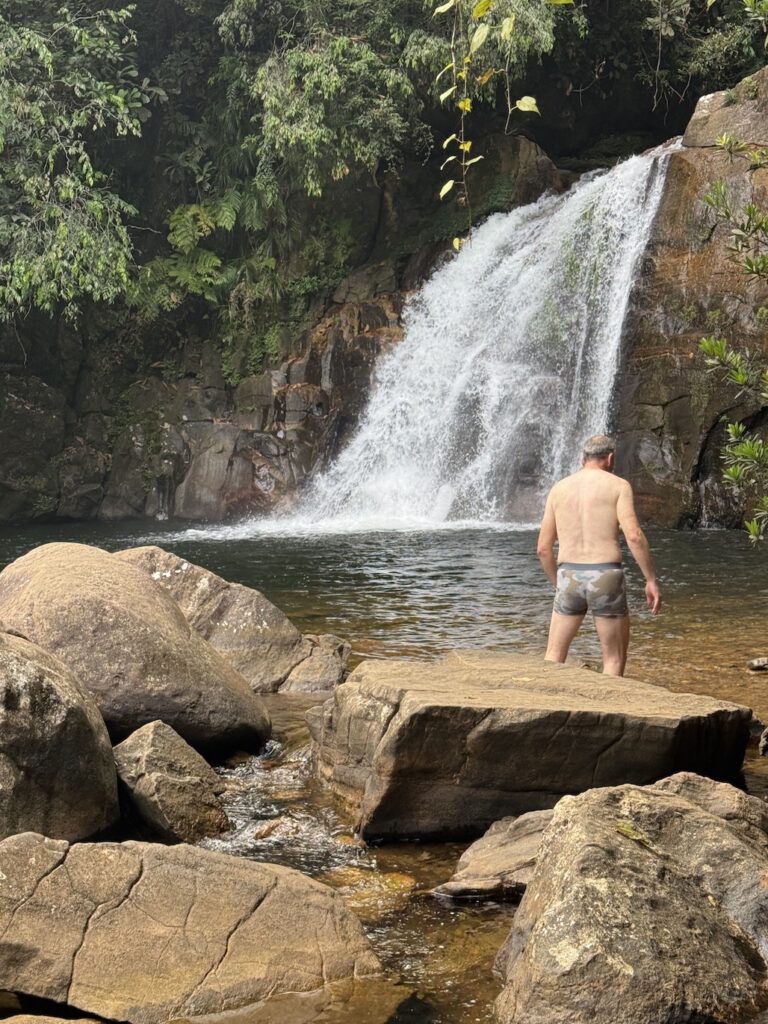
We let him be to carry on along the path. Soon, we reached a river and, after clambering over slippery boulders, swam in a cool, deep pool under a raging waterfall. I massaged my aching back, damaged riding the wake in a boat a couple of days prior, by lying upon a rush of water flowing through a narrow gap between two boulders. The jungle was peaceful, just the tumbling waterfall, as I lay on my back and let the cool water wash over me.
The two-and-a-bit-mile walk back to the village wasn’t as eventful but was enchanting. Dusk fell, and the forest changed. The birds were gone, and the cacophony of frogs and insect noises filled our ears. We walked quicker, yet taking extra care to look for spider webs crossing the path, and were soon back at the Reserve’s entrance, where our jeep would take us back up the track to our accommodation and our waiting dinner.
Back at the Rainforest Hideaway, we changed before heading down the riverside path to the dining deck. We received a delicious dinner of curries and sambols, washed down with a welcome bottle of Singha beer as we rubbed our aching legs and looked out into the blackness of the forest.
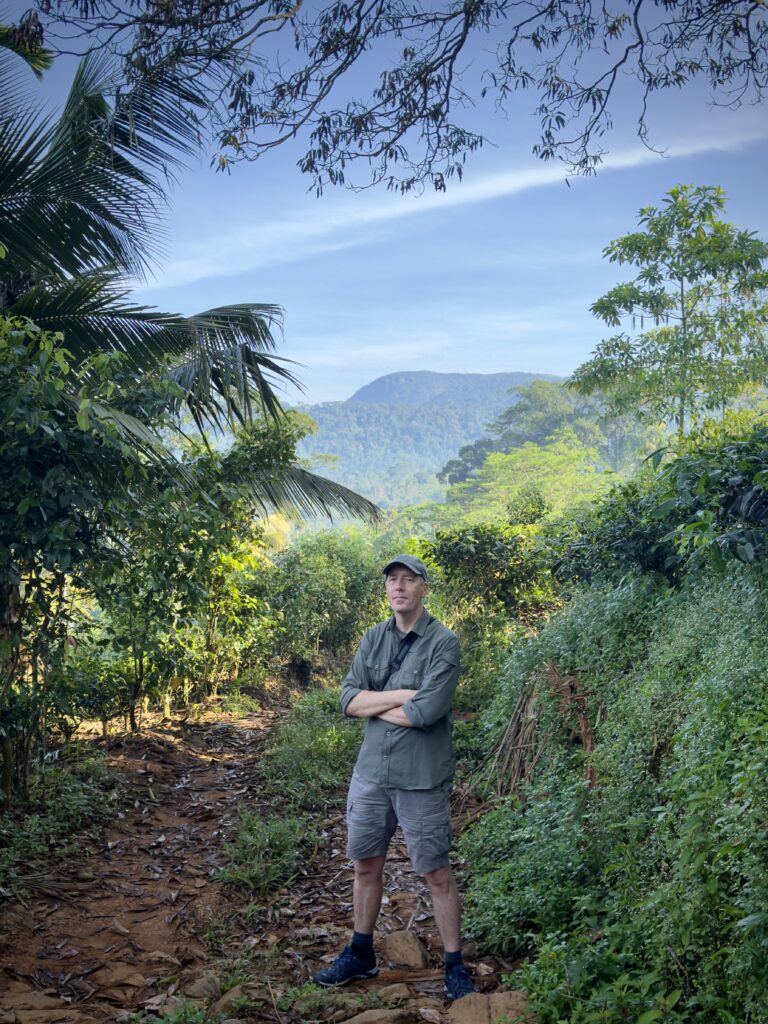
The next morning, after a surprisingly deep sleep, lulled by the noises of the forest and the constant white-noise hum of the waterfall, we ate a sumptuous breakfast before setting off for a walk in the surrounding bush. We made it a hundred metres, saying hello to the tea-pickers in a small plantation before turning a corner and standing bolt-still, gobsmacked by the view that stretched before us. We were gaping out across a vast, verdant valley, surrounded by towering, tree-covered hills. The tree tops were brimming with monkeys and birds. We spent the next two hours rooted to the spot, discovering something new and intriguing with each sweep of our binoculars. Jungle fowl, the rainbow coloured chicken-like ground bird, which is the national bird of Sri Lanka, ran by our feet. Peakcocks glided down from the very tops of tall trees, their night-time haven no longer needed and their resplendent tail feathers sufficiently dried by the morning sun.
The vista we’d discovered was a truly awe-inspiring end to a wonderful stay at the Rainforest Hideaway. If you’re in Sri Lanka, this is a must-do stopover.
Simon Eyre
After travelling internationally on business for multiple decades, I have decided to take early retirement. I am now fulfilling two dreams. To travel more slowly and to write my own thriller novels.


